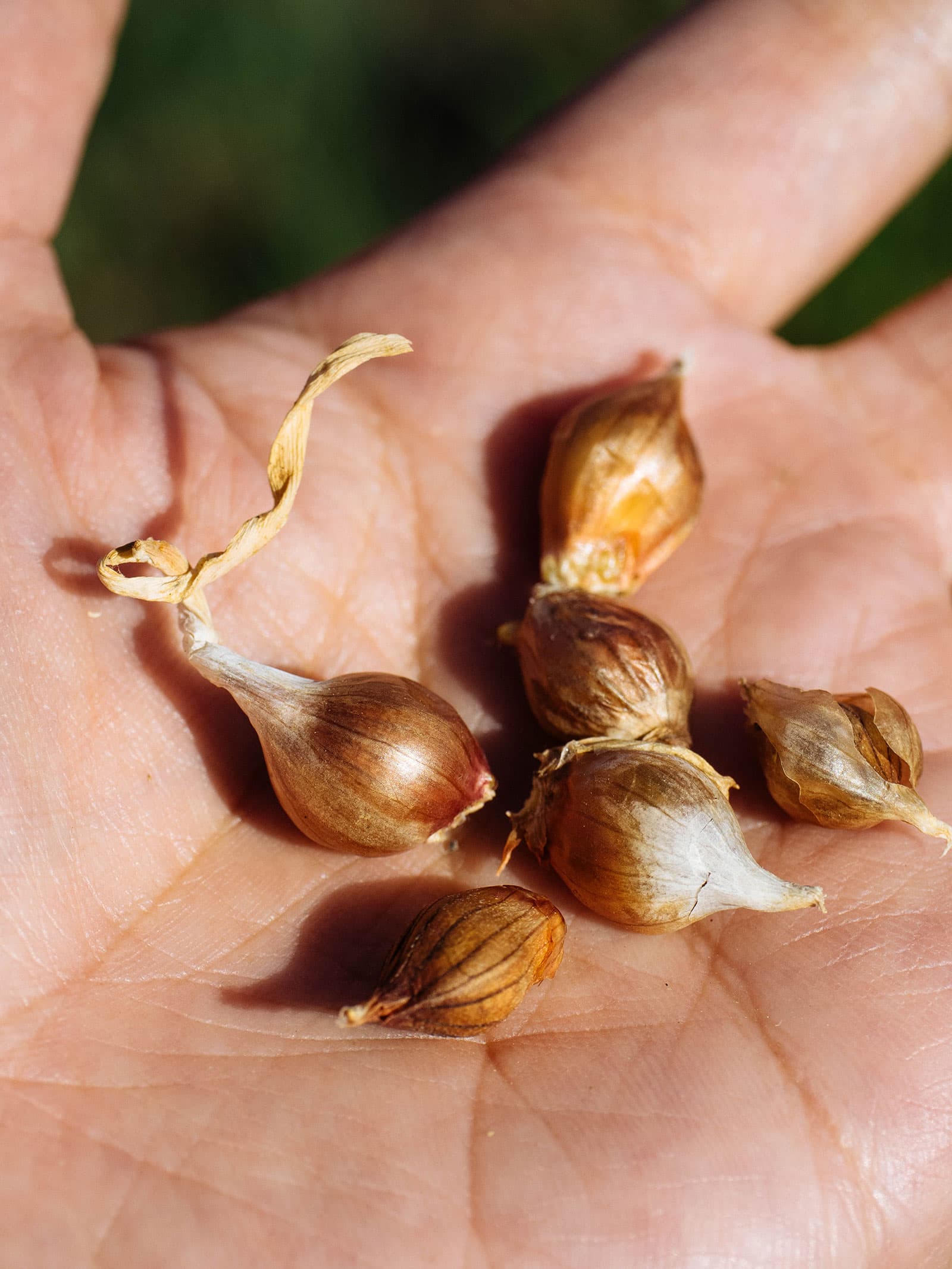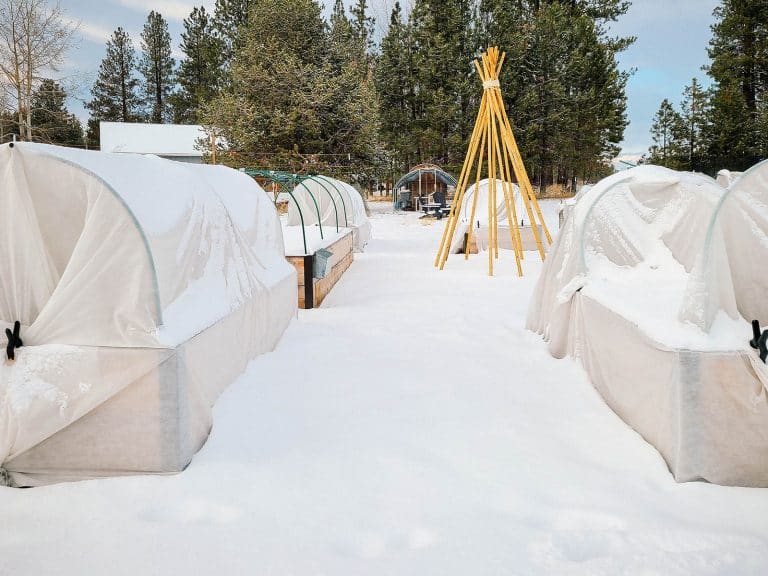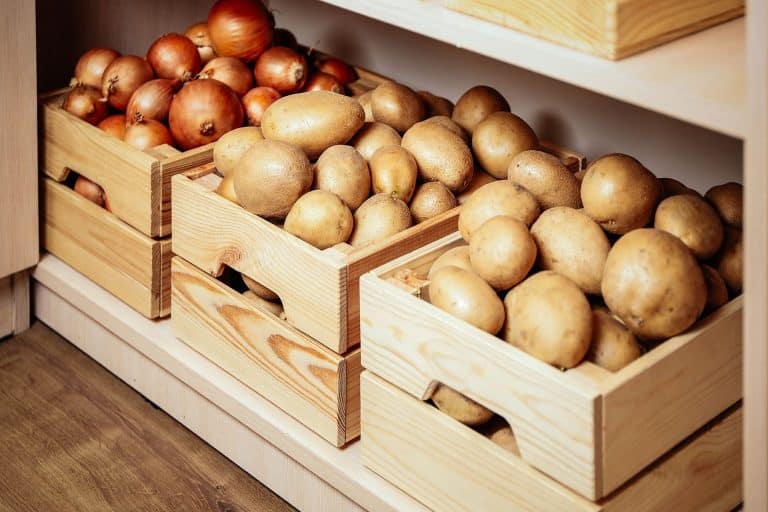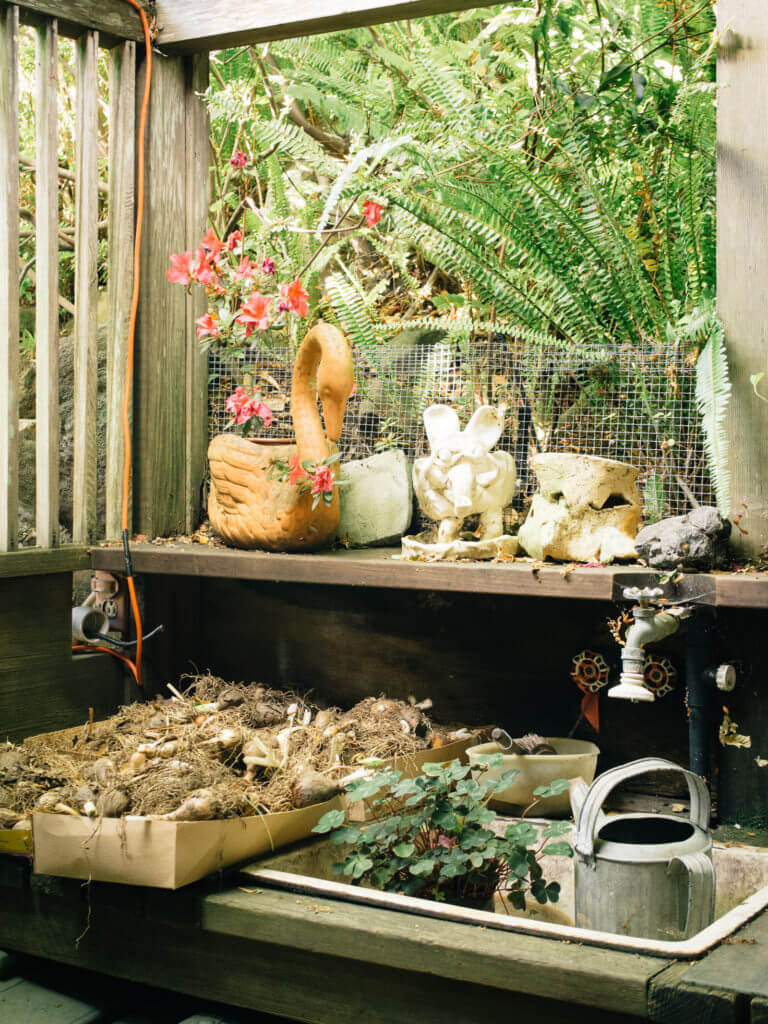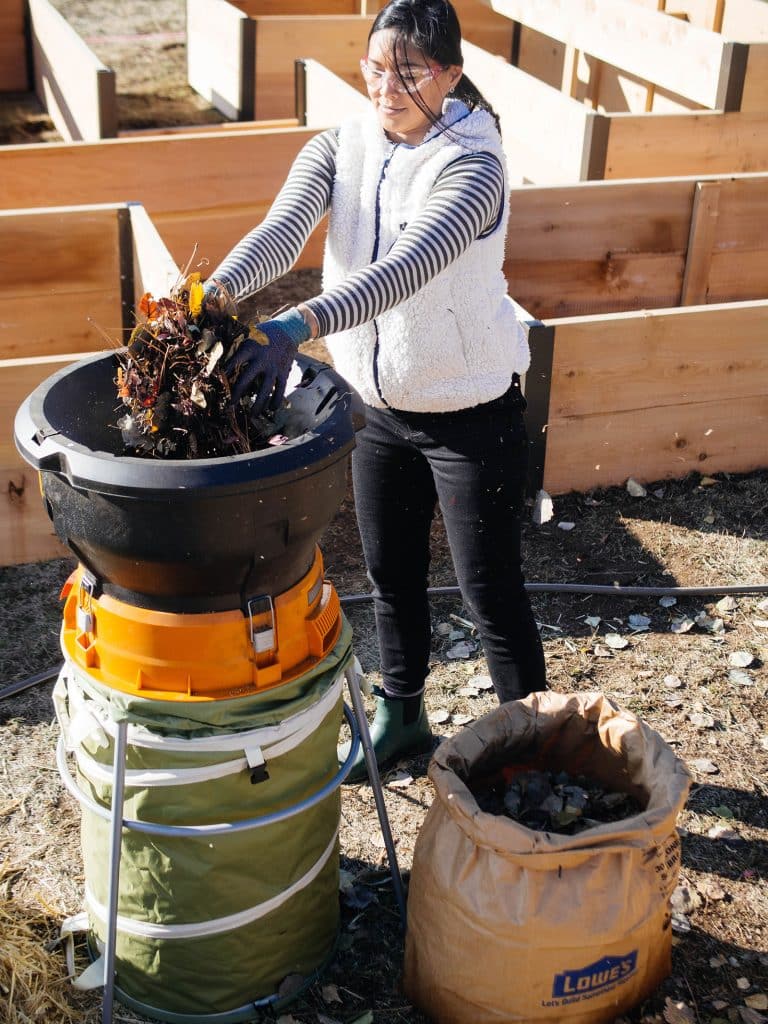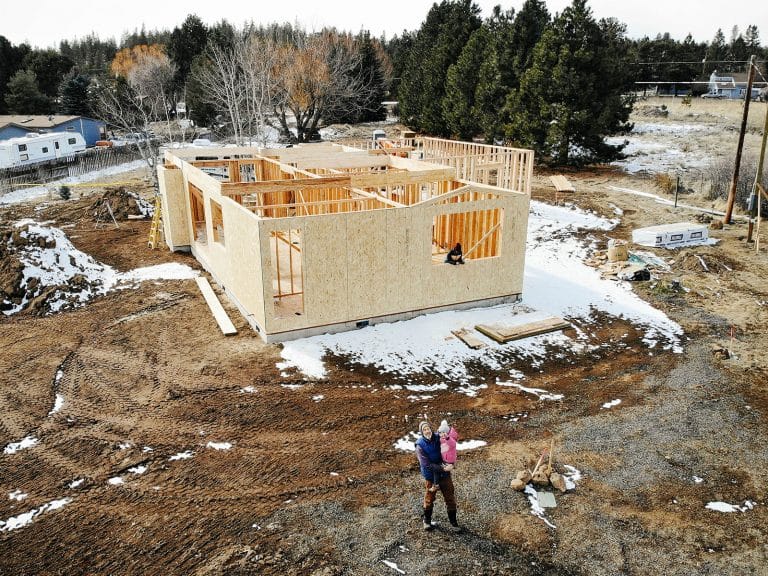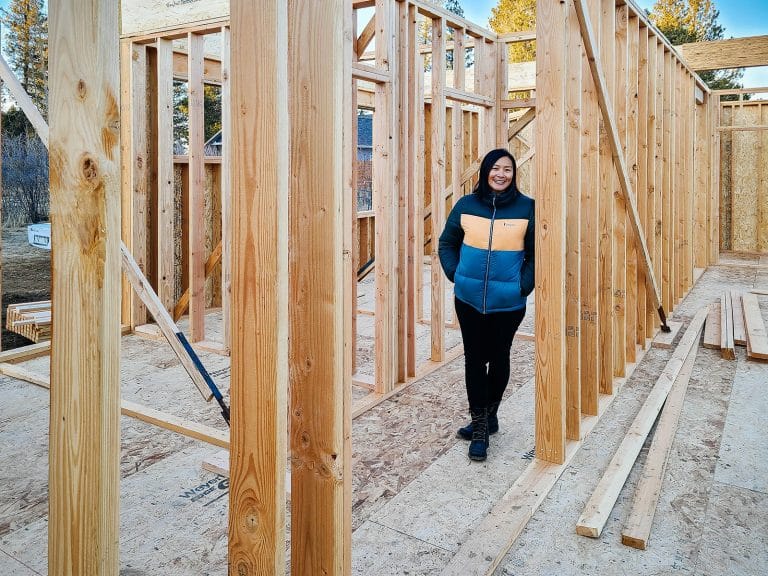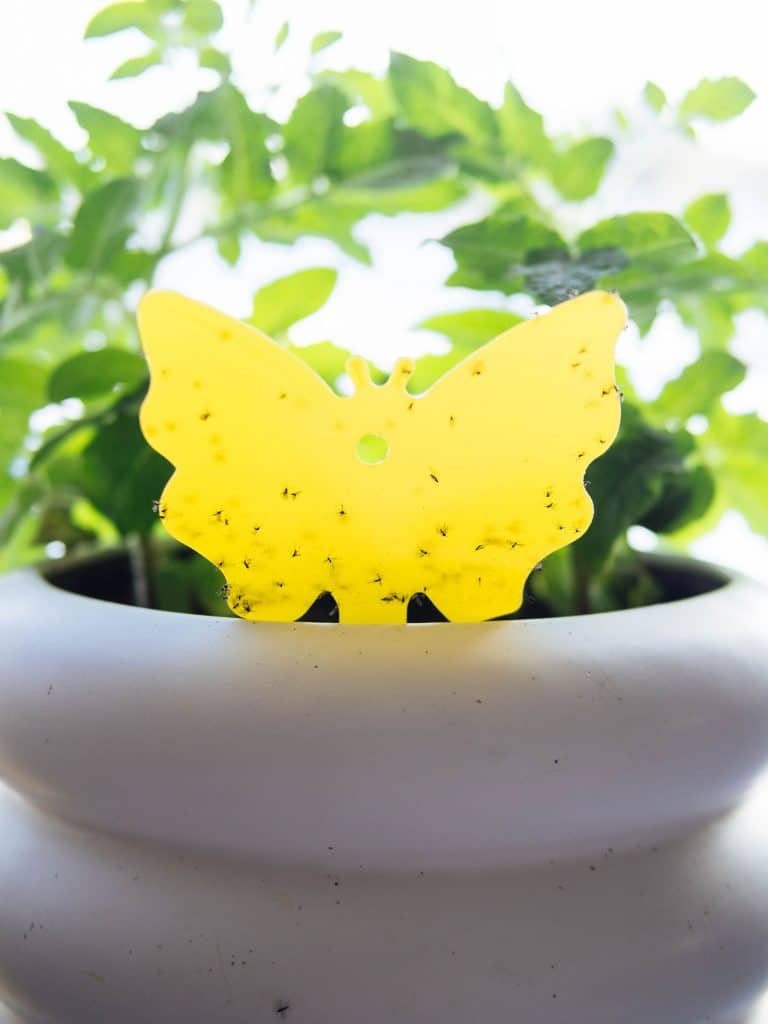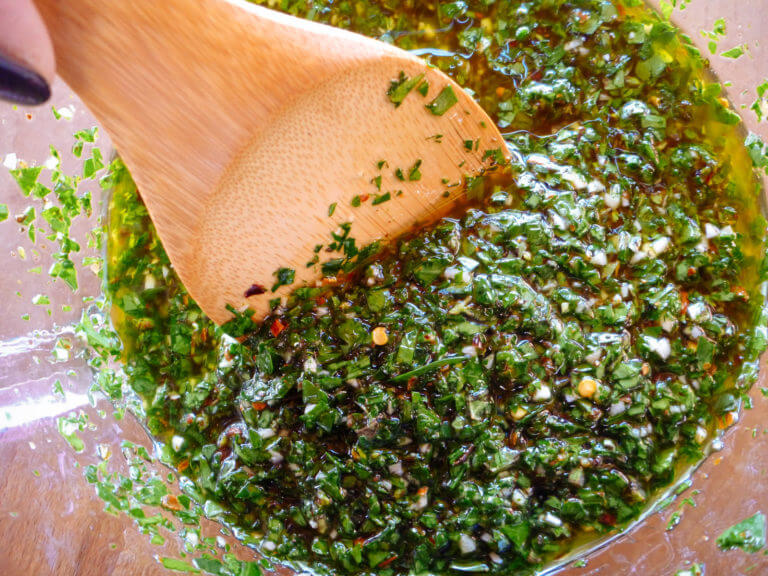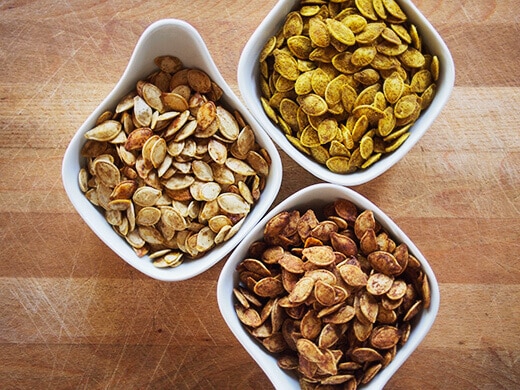Almost everyone who grows garlic grows it from “seed garlic” (the individual cloves from a bulb). But garlic can also be grown from “true garlic seed,” which is far less common, as sexual reproduction in garlic is much more complicated and rarely guarantees viable seeds.
In between seed garlic and true garlic seed, you have another option: growing garlic from top-setting bulbils, which behave like seeds (but are technically not seeds, as they’re the result of asexual reproduction).
Related: You can grow Egyptian walking onions from bulbils too
Bulbils form on top of the coiling flower stalk known as a scape and look like miniature cloves of garlic, which is fitting, since they’re essentially clones of the parent plant. Many people call these bulbils “garlic seed” since they can also be planted to produce a genetically identical crop (albeit over a longer period of time, usually two to three years).

So why would you choose to plant bulbils instead of cloves?
Well, if you’re looking for an easy and cost-effective way to cultivate hundreds or even thousands of garlic plants, bulbils are the way to go.
While the typical hardneck garlic variety may only produce 4 to 8 cloves that are large enough to save for planting, it will produce anywhere from 10 to 100 bulbils if the scapes are left intact. Different varieties of garlic produce different sizes of bulbils, ranging from those the size of peas down to some as small as grains of rice.
Letting a few garlic scapes mature each year means you can collect lots of bulbils and plant perennial garlic patches that provide harvests in all stages (from baby garlic to fully grown garlic and everything in between).
Collecting garlic seed
Hardneck garlic plants typically flower in late spring to early summer, producing the delectable treat we all know as garlic scapes. Gardeners usually remove the scapes as soon as they appear because they stunt the growth of the bulbs by redirecting energy into the production of seeds. Not to mention, you’d be throwing away perfectly good food if you didn’t harvest the scapes!
Read more: How to use garlic scapes in your everyday cooking
But if you want to collect seeds, leave the scapes alone and let them mature through late summer to early fall. The flower cluster (inflorescence) will continue expanding, eventually splitting the sheath open to reveal green or purple bulbils inside. (The color depends on the variety of garlic grown.)
Quick tip
Can you eat garlic bulbils? Yes, you can! When they’re still fresh on the plant, you can break them apart to use like regular garlic—just toss them whole into a dish.
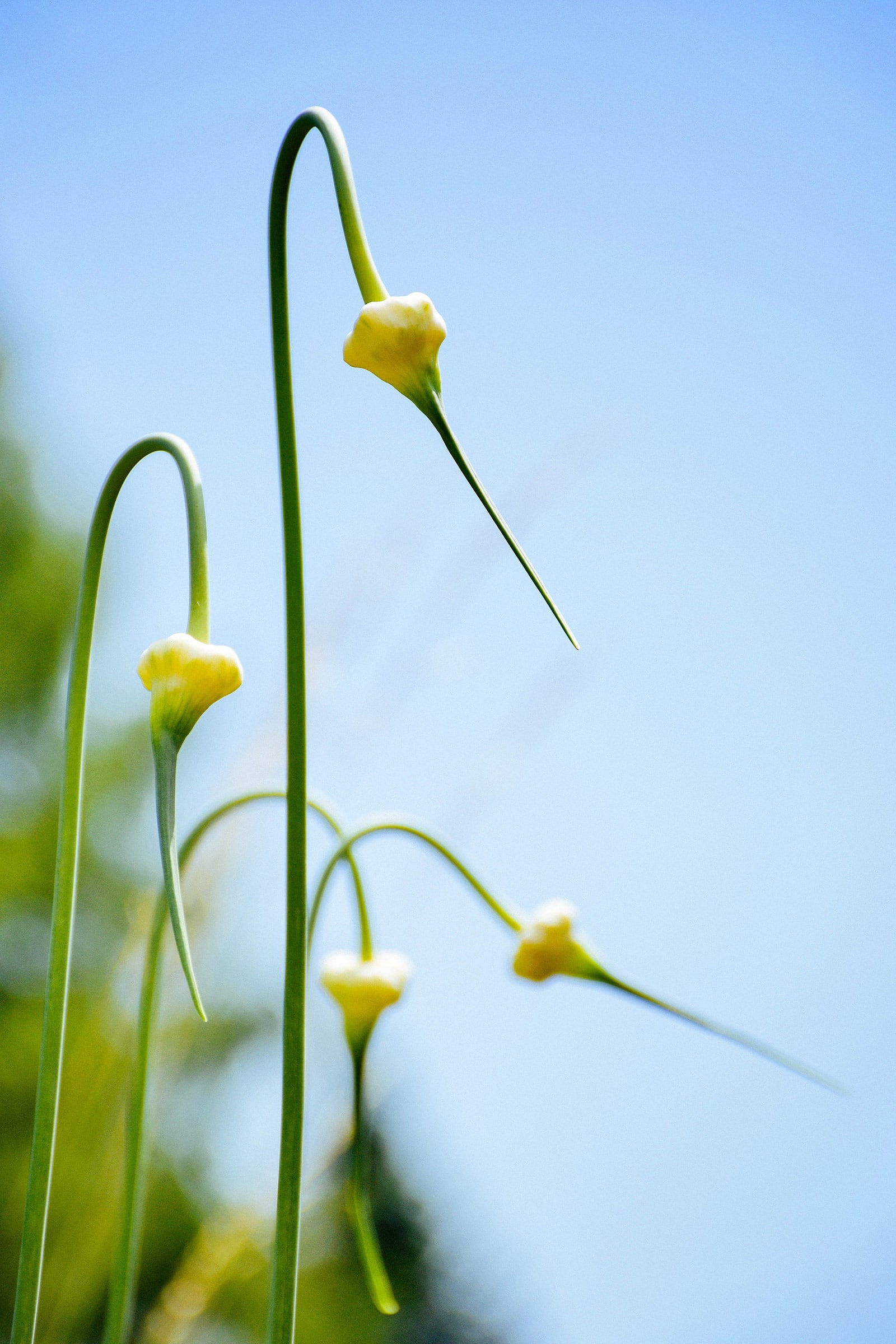
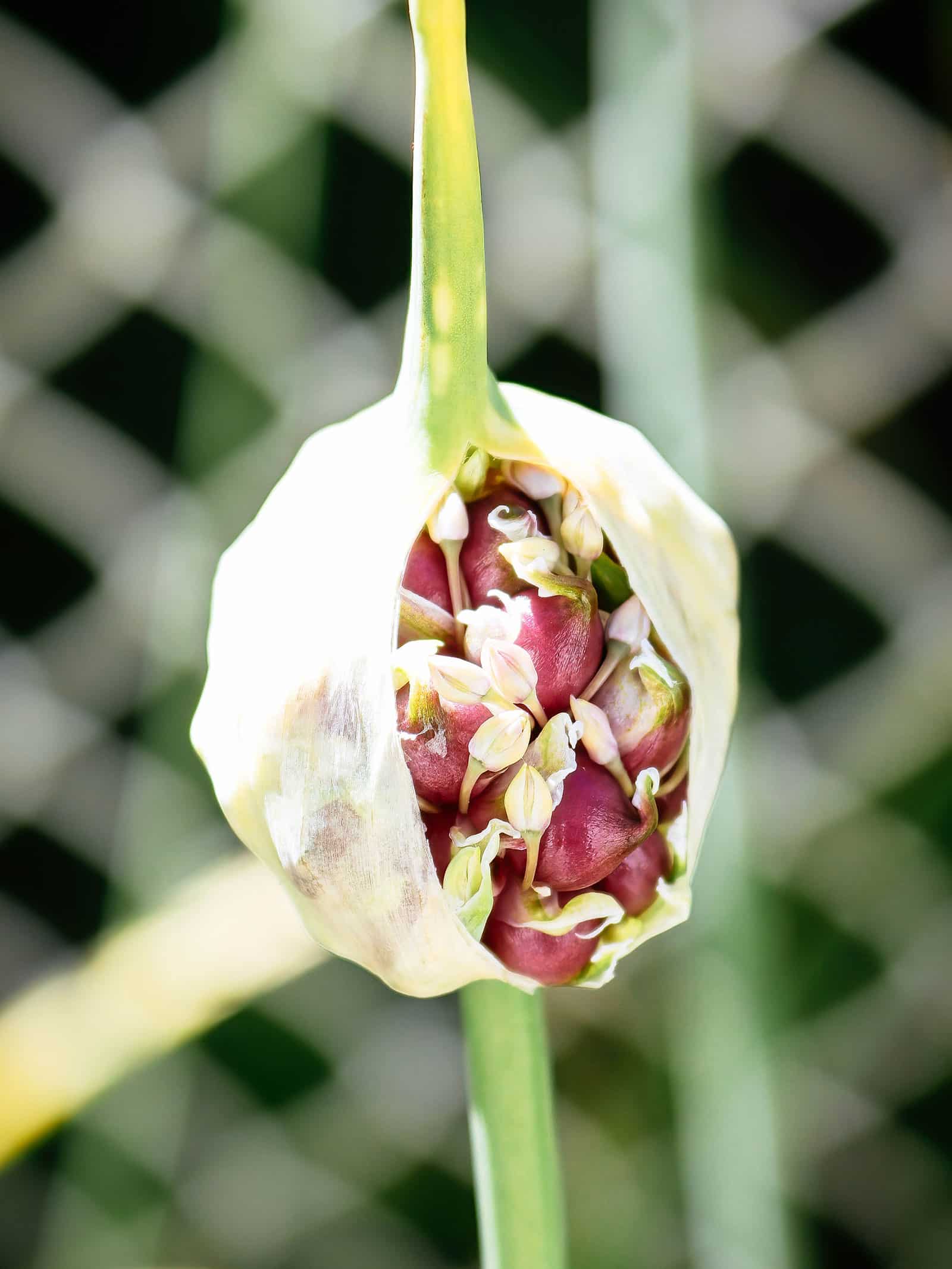
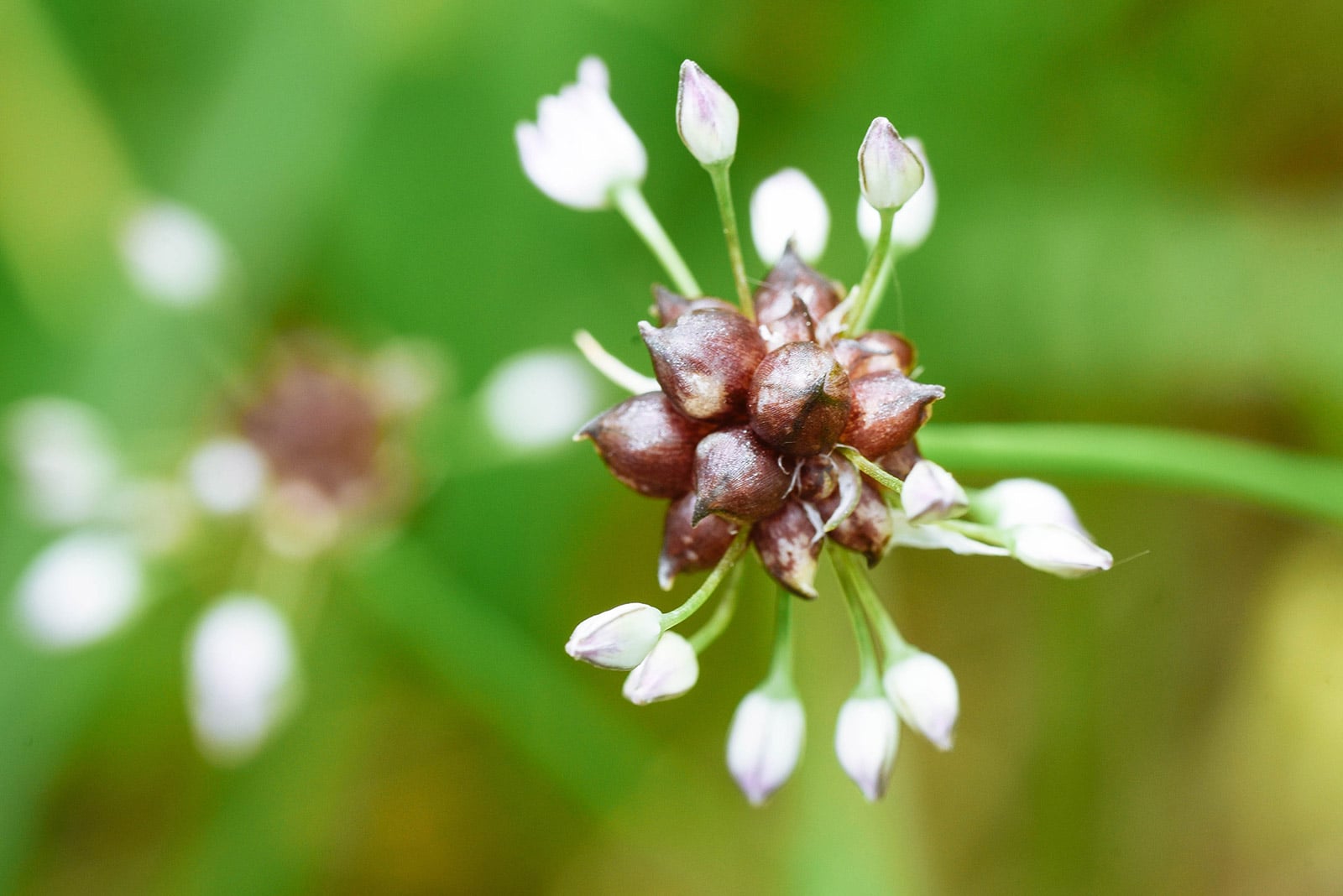
As the seeds (bulbils) mature and dry, they’ll start to turn brown and the rest of the plant will die back.
When this happens, cut off the entire cluster with the bulbils intact. You can also harvest the garlic bulb at the base of the plant, as it’ll still be usable (but likely smaller than your other bulbs that were harvested earlier).
Pull the bulbils apart and leave them out to dry completely in a well-ventilated area for a few days. Since the bulbils have been above ground, they dry out much faster than garlic bulbs that are curing.

Once fully dried, the bulbils can be stored with your other garden seeds.
Related: How to save and store seeds for next year’s garden
Growing garlic from bulbils
Planting bulbils is a bit different from planting seed garlic. One tiny bulbil will need a full year to get established in the soil and grow to the size of a garlic clove. It will need another year (sometimes up to two years) to produce a full harvestable bulb.
Plant your bulbils in fall, as you do with seed garlic. (I recommend planting them far away from your regular crop so you don’t accidentally harvest them the following summer and end up disappointed with the size.)
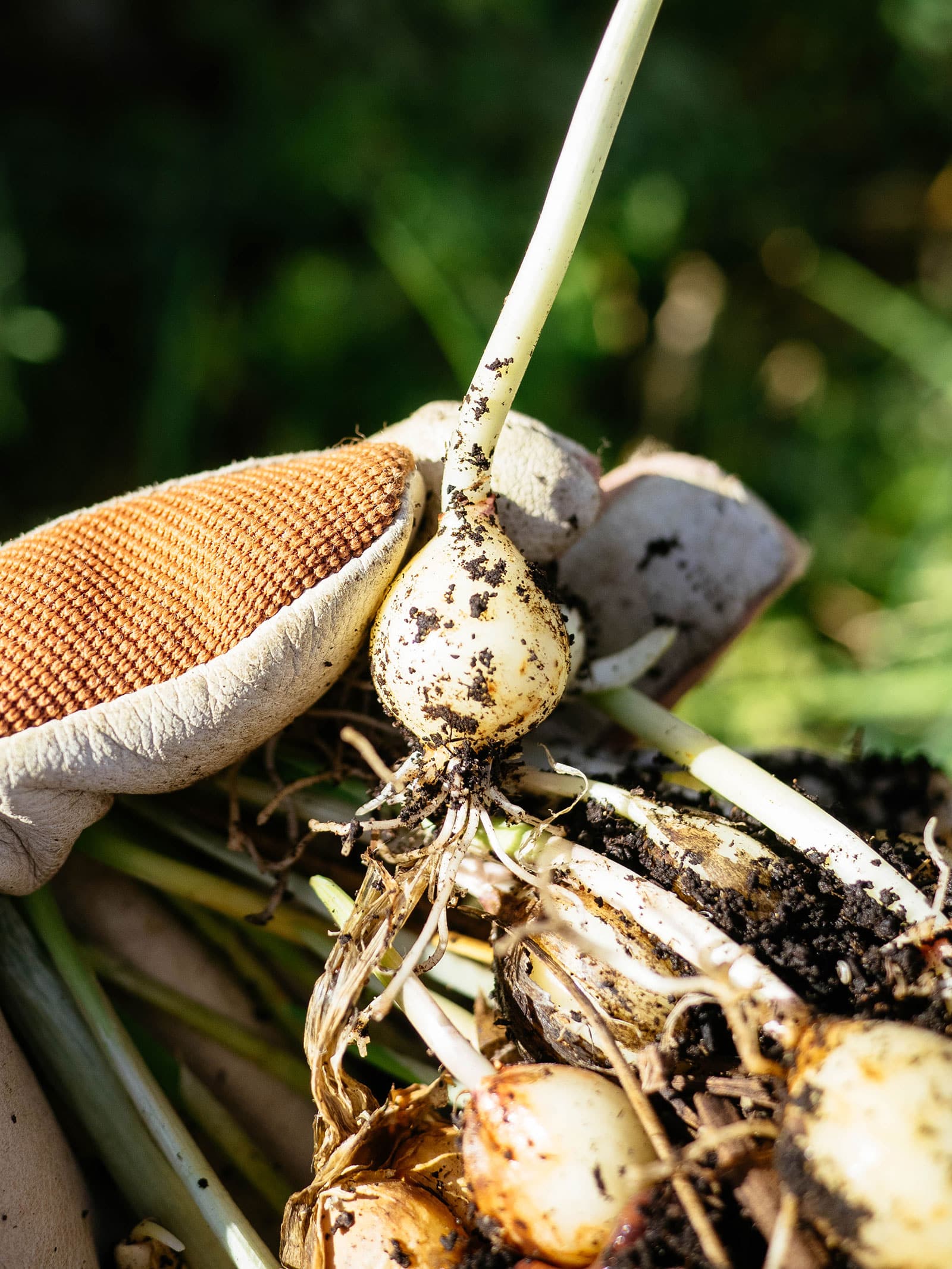
Since the bulbils are so small, they only need to be buried 1/2-inch deep in well-draining soil, about 4 inches apart. Keep them mulched and weed-free with moderate watering, and patiently bide your time until the plants are ready for harvest. (You’ll know when they are by using this same trick to gauge when your garlic is fully developed.)
But the wait will be worth it—garlic grown from top-setting bulbils are practically free when you consider how abundant they are, and they’ll keep propagating year after year even if you do nothing.


